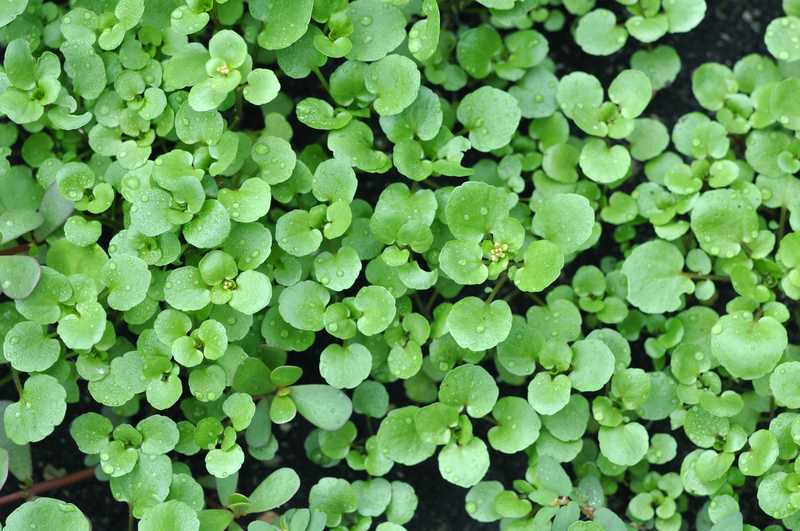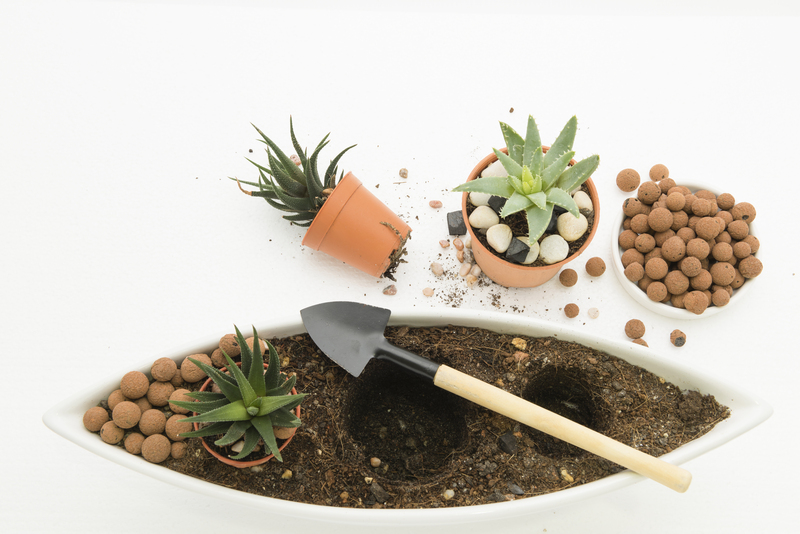Your step-by-step guide to starting a flourishing herb garden
Posted on 09/06/2025
Your Step-by-Step Guide to Starting a Flourishing Herb Garden
Unlock the world of fresh flavors, fragrances, and wellness by cultivating your own herb garden at home. Whether you're a beginner or an experienced gardener, growing a thriving herb garden is a rewarding venture that brings beauty and utility to any space. In this comprehensive guide, you'll discover all you need to embark on your journey toward a bountiful, verdant oasis right outside your door.

Why Start a Home Herb Garden?
From culinary inspiration to natural remedies, herb gardens offer a multitude of benefits. Not only do they provide a continuous supply of fresh herbs year-round, but they also contribute to a healthier lifestyle and a greener environment. Let's explore the compelling reasons for launching your own herb garden:
- Enhanced flavor: Freshly harvested herbs elevate dishes in ways dried herbs simply cannot.
- Health benefits: Many herbs contain antioxidants and medicinal properties.
- Cost savings: Grow your own and reduce grocery expenses.
- Sustainability: Minimize food miles and packaging waste.
- Aesthetics and fragrance: Herbs beautify your space and infuse it with pleasant scents.
Step 1: Selecting the Ideal Location for Your Herb Garden
The first step in your herb gardening journey is choosing the perfect spot. Herbs generally require at least six hours of sunlight per day. Here's how to find your ideal location:
- Sunlight: Select a spot that receives ample sunlight, such as a south-facing windowsill, balcony, or garden patch.
- Accessibility: Make sure your garden is easy to reach for frequent harvesting and care.
- Protection: Shield herbs from strong winds and heavy rain for optimal growth.
Indoor vs. Outdoor Herb Gardens
Don't let limited space deter you. You can cultivate a flourishing herb garden both indoors and outdoors. Container gardening allows for flexibility and mobility, while outdoor plots support robust growth and larger yields.
Step 2: Choosing the Right Herbs for Beginners
If you're new to herb gardening, begin with species that are easy to grow and maintain. Here are some novice-friendly herbs that thrive in most environments:
- Basil: A favorite in Italian and Asian dishes; thrives in warm, sunny spots.
- Mint: Hardy and fast-growing; perfect for teas, salads, and cocktails.
- Parsley: Adds freshness to a variety of dishes; prefers partial shade.
- Rosemary: Drought-tolerant and aromatic; a must for roasted meats and potatoes.
- Thyme: Compact and low-growing; complements poultry and vegetables nicely.
- Chives: Offers a mild onion flavor; grows well in pots and ground beds.
- Cilantro: Essential for salsas and curries, prefers cooler temperatures.
For a successful herb garden, select herbs that match your climate and culinary preferences.
Step 3: Gathering Your Gardening Tools and Supplies
A well-equipped gardener is a successful one. Here's a list of essentials for starting your herb garden at home:
- Containers or raised beds: Choose pots with drainage holes or raised beds for better root health.
- Quality potting mix: Opt for a light, well-draining potting soil blend suitable for herbs.
- Watering can or hose: Ensure consistent, gentle watering without disturbing delicate roots.
- Gardening gloves: Protect your hands from soil and thorns.
- Hand tools: A trowel and pruning scissors will make planting and harvesting easier.
- Labels: Mark your herbs to avoid mix-ups, especially when they're young and look similar.
Step 4: Planting Your Herb Seeds or Seedlings
You can start your herb garden from seeds or young plants (seedlings). Both methods have their merits:
- Seeds: Cheaper and offer more variety, but require patience.
- Seedlings: Quicker harvests and recommended for beginners.
How to Plant Your Herbs
- Prepare the containers/soil: Fill your container or garden bed with quality potting mix. Break up any clumps and moisten the soil if dry.
- Sow seeds or plant seedlings: Follow packet instructions for sowing depth and spacing. For seedlings, gently remove from the nursery pot and plant at the same depth.
- Water lightly: Water gently to settle the soil. Keep it moist but not soggy, especially in the early days.
- Label each herb: This helps you remember what's planted where, particularly if growing many varieties.
Remember, most herbs do not like waterlogged roots, so ensure proper drainage.
Step 5: Nurturing and Caring for Your Herb Garden
Now comes the most rewarding part--watching your herb garden flourish! With the right care, you'll enjoy a lush, productive patch for months or even years.
- Watering: Herbs need regular, moderate watering. Most prefer soil that dries slightly between waterings. Avoid overwatering.
- Sunlight: Maintain at least six hours of sunlight. Rotate pots to ensure all sides receive sun exposure.
- Feeding: Use an organic, balanced fertilizer monthly during the growing season for optimal growth.
- Pruning: Harvest regularly to encourage bushy growth and prevent flowering (which can reduce flavor in some herbs).
- Pest control: Inspect plants for pests like aphids or spider mites. Treat organically, using neem oil or insecticidal soap.
Tips to Maximize Your Herb Yield
- Pinch back tips of basil, mint, and oregano frequently for bushier plants.
- Don't let herbs flower unless you want to save seeds. Flowering can make leaves bitter.
- Harvest in the morning when essential oils are strongest.
Step 6: Harvesting and Using Your Home-Grown Herbs
Once your herb garden is thriving, it's time to reap the rewards!
- How to harvest: Use sharp scissors or fingers to snip leaves and stems. Only take up to one-third of the plant at a time to avoid stress.
- Immediate use: Add fresh herbs directly to your culinary masterpieces, teas, or remedies.
- Preservation: For future use, herbs can be dried, frozen, or used to make infused oils and vinegars.
Cooking and health ideas: Add chopped basil or parsley to salads, blend mint into smoothies, or make relaxing herbal teas. Home-grown herbs are fresher and richer in nutrients and flavor than store-bought ones.
Common Challenges and Solutions in Herb Gardening
Even seasoned herb gardeners face occasional challenges. Here are some typical problems and how to overcome them:
- Leggy plants: Usually caused by insufficient sunlight. Move your herbs to a sunnier location or supplement with grow lights.
- Wilting or yellow leaves: Often a sign of overwatering or poor drainage. Ensure pots have holes and check soil moisture before watering.
- Pest infestations: Identify pests early. Use gentle, organic solutions as many chemical pesticides are unsuitable for edible plants.
- Slow growth: Check light, water, and soil fertility. Add compost or all-purpose organic fertilizer for a boost.
Advanced Tips for a Lush and Productive Herb Garden
Once you have mastered the basics of growing a flourishing herb garden, you may want to add new dimensions to your gardening adventure. Here are some expert ideas:
- Companion planting: Pair herbs together that support each other's growth, such as basil with tomatoes, or chives with carrots and lettuce.
- Succession planting: Sow seeds in intervals to ensure a steady supply of fresh herbs.
- Vertical gardening: Maximize space by using vertical planters, wall-mounted racks, or hanging baskets.
- Herb spiral: Build a spiral-shaped raised bed for visual interest and diverse microclimates.
- Winter care: Bring tender plants indoors; use grow lights to continue harvesting all year.

Frequently Asked Questions About Flourishing Herb Gardens
Q: How often should I water my herb garden?
A: Water when the top inch of soil feels dry. Overwatering is a common mistake, so always check before you add more.
Q: Which herbs can be grown together?
A: Combine herbs with similar light and water needs. Mediterranean herbs (rosemary, thyme, oregano) group well; moisture-loving herbs like basil and parsley thrive together.
Q: Can I grow a flourishing herb garden in an apartment?
A: Absolutely! Many herbs do well on sunny windowsills, balconies, or under artificial grow lights.
Q: How can I keep pests away naturally?
A: Encourage beneficial insects, handpick pests, and use organic neem oil or insecticidal soap.
Q: When and how should I fertilize my herbs?
A: Fertilize monthly during the main growing season with a balanced, organic fertilizer. Avoid over-fertilization, which can lead to weak growth.
Conclusion: Enjoy Your Vibrant, Thriving Herb Patch
Starting a flourishing herb garden at home is an enriching, eco-friendly project for anyone. By following these detailed steps--from location selection, herb choice, and planting, to care, harvesting, and troubleshooting--you'll cultivate a space that overflows with flavor, fragrance, and well-being. Begin small, experiment with different varieties, and enjoy the endless rewards your own herb haven brings.
Ready to embark on your herb gardening adventure? With dedication and these tried-and-true strategies, your garden will thrive and continue to delight your senses and palate for years to come!

